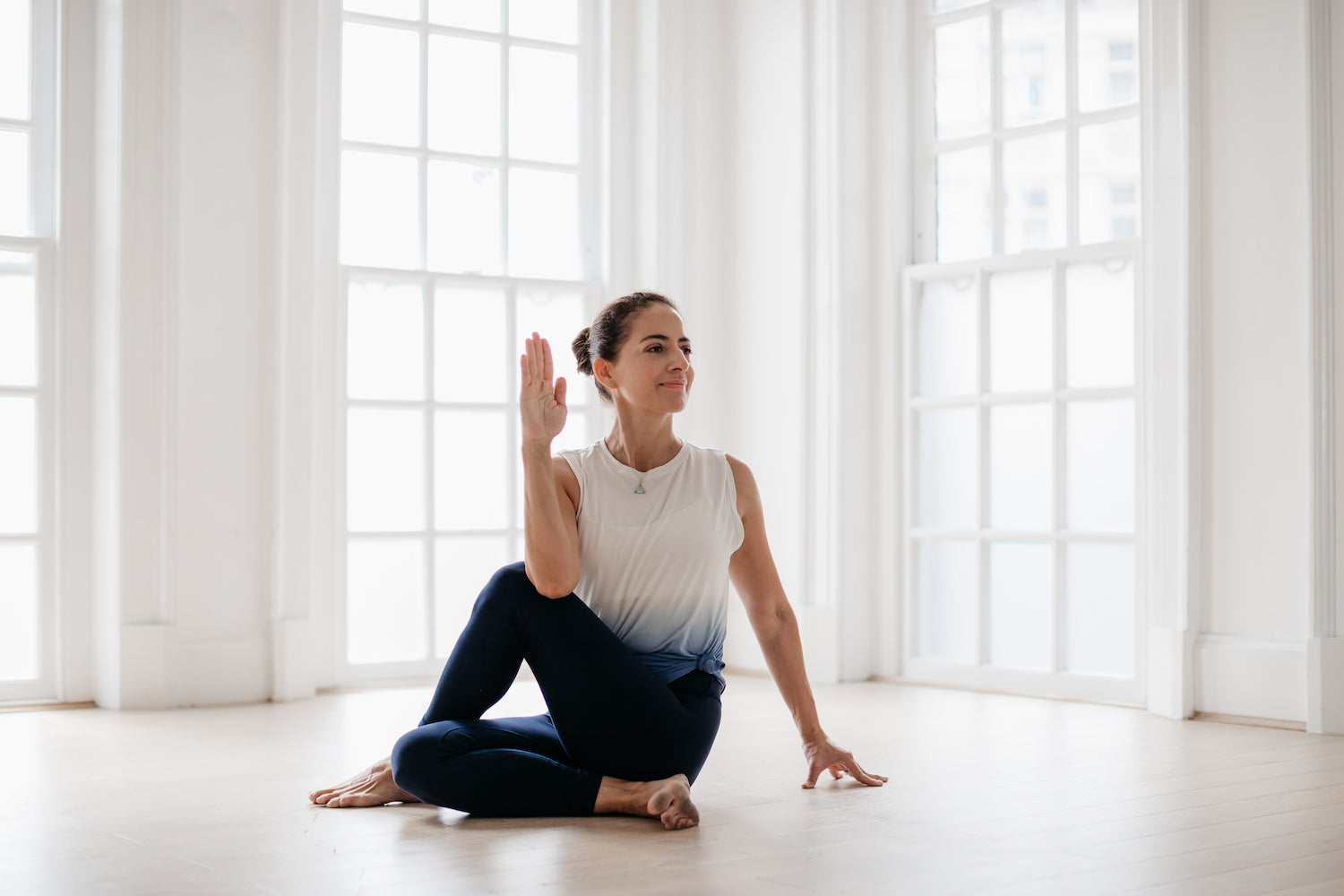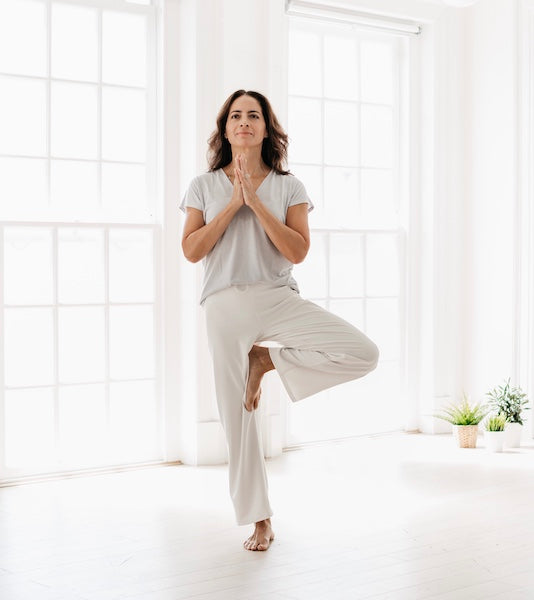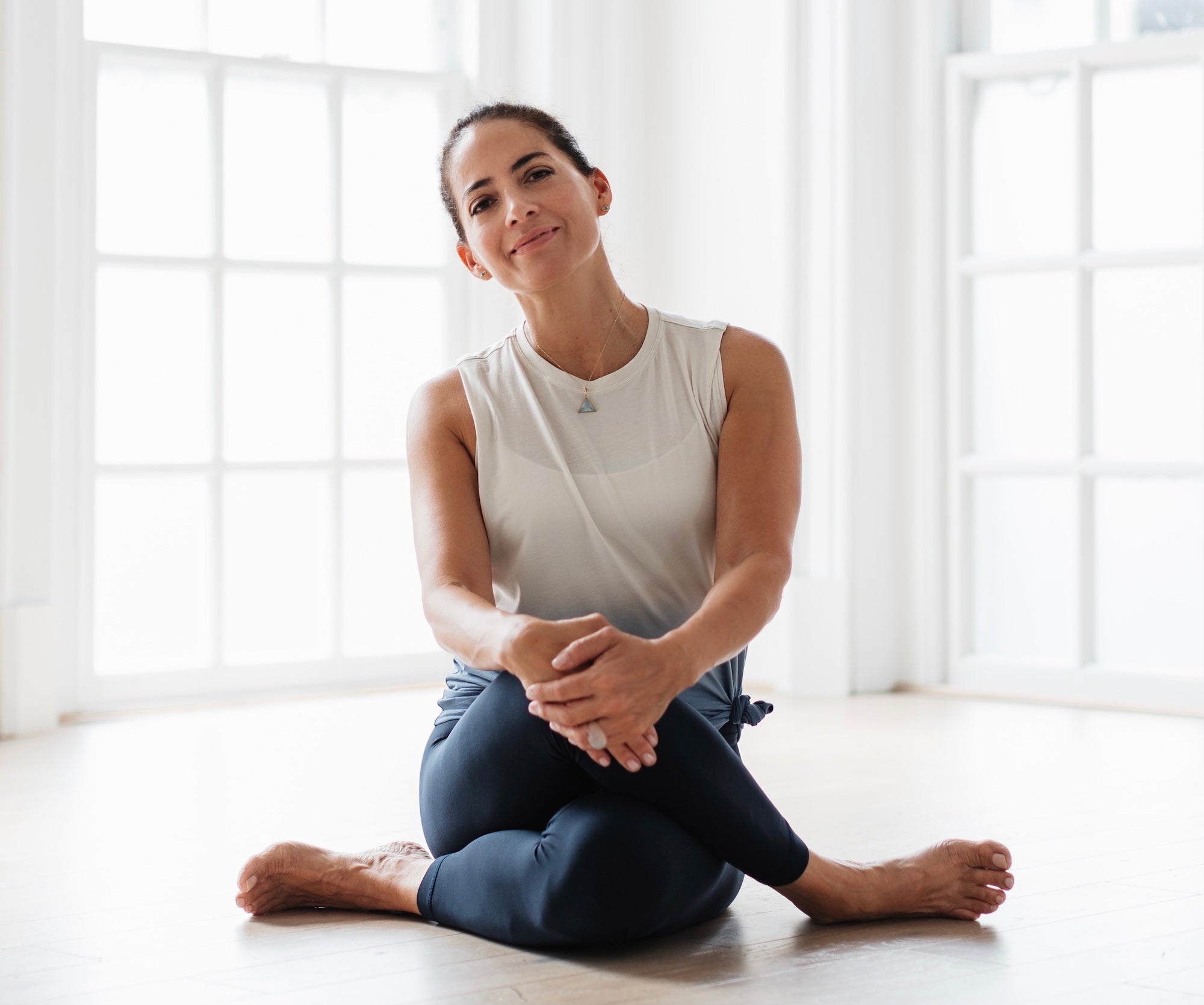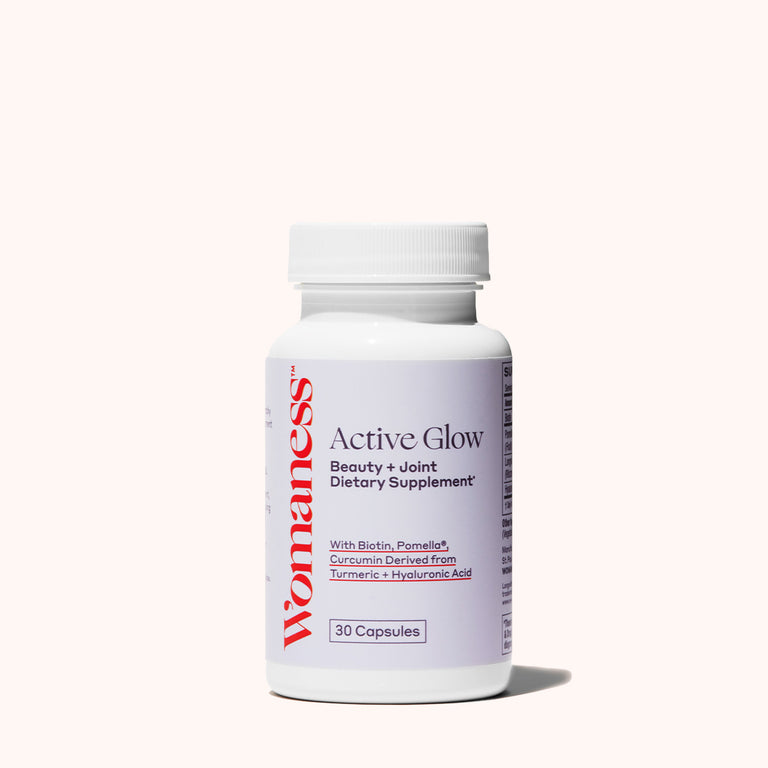By Gabriella Espinosa 5-Minute Read

Gabriella Espinosa is a Menopause and Sexual Wellness Coach and Yoga Teacher at Movement for Modern Life. Here she talks to us about how starting a yoga practice can support you during menopause.
Yoga is one of the best forms of movement for women as we move through the menopause transition. With a regular practice, yoga can help improve flexibility and balance, support muscle and bone strength, reduce stress, enhance sleep, and boost mood and cognitive function. Its focus on inner awareness and attention to our body’s abilities enhances the way we feel about our bodies, improving self-esteem and deepening appreciation for the amazing things our bodies CAN do. Read more about yoga for menopause in the MFML Complete Guide
How does yoga help with menopause?
The hormonal roller coaster we experience in menopause while trying to juggle work, family, and life can cause us to disconnect from our bodies. Our bodies are always talking to us, but often we’re too busy or too tired to listen.
The practice of yoga cultivates greater awareness of our body and mind by focusing on physical yoga poses, breathing exercises, relaxation, and meditation. This awareness improves your ability to “listen to your body” and meet its needs through nourishment, rest, movement, pleasure, and connection. Reconnecting to yourself in this way allows you to shift limiting beliefs about your changing body, make informed health choices, and empower you to be the best version of yourself.
“Yoga helps women find calm in the storm of menopause symptoms”
Studies show stress as a key driver of some menopausal symptoms. How does yoga help manage stress?
Yoga helps women find calm in the storm of menopause symptoms that impact our ability to function in daily life.
In yoga practice, we focus on breathing and conscious relaxation, which leads to lower heart rate and blood pressure, switching on your parasympathetic nervous system and allowing you to “rest and digest” (Try Yoga to Rest & Digest with Gabriella Espinosa).
Research has also shown yoga to reduce cortisol levels, so a regular practice helps you feel calm and grounded—which can reduce the stress, anxiety, and overwhelm that so many women report feeling around this time.
Furthermore, yoga allows us to change how we perceive and respond to stress, thus creating greater emotional resilience to handle the ups and downs menopause can bring.

What are some other menopause symptoms that yoga helps alleviate?
Research confirms what yogis have known for thousands of years. The current findings show the following benefits of yoga in menopause:
• Sleep
Evidence shows that yoga can increase sleep quality and duration, and even increase secretion of melatonin. (Try Yoga for Restful Sleep with Gabriella)
• Anxiety & Depression
Yoga has been shown in several studies to reduce feelings of anxiety and depression. (Try Gentle Yoga for Emotional Release with Gabriella)
• Improves Bone Density
Bone loss begins in our mid-thirties and accelerates with the decline in estrogen. Yoga poses are weight bearing, involve muscle contraction, and promote balance—key pillars for improving bone density. (Try Yoga for Healthy Bones & Stability with Gabriella)
• Tone & Strengthen Pelvic Floor
Yogic squat variations offer the pelvic floor muscles full range of movement and resiliency. (Try this Pelvic Floor Awareness Tutorial with Gabriella)
• Migraines
Studies have shown significant improvement in migraine symptoms from a regular yoga practice. (Try Cooling & Calming Practice with Gabriella)
• Brain Function
Just 20 minutes of yoga have been shown to relieve brain fog and help cognitive processing. (Try Enliven Your Body with Gabriella)
• Breathing & Lung Function
Practicing regular yogic breathing can help expand lung capacity and deliver more oxygen to your brain and other organs. (Try ‘Shake it Out’ with Gabriella)
• Flexibility, Balance, Strength, & Posture
These are all touchpoints for most yoga poses which help improve longevity and health span. (Try Gentle Movement for Better Balance with Gabriella)
What sort of yoga practice should women do in menopause?
Of course, with all the changes going on, you’re not always going to want to do a vigorous yoga practice. Our nervous systems are more sensitive during menopause, so you may want to focus on slower, more calming forms of yoga, such as floor-based yin yoga or restorative yoga.
A gentle hatha class or restorative yoga is all about slowing down, opening your body with passive stretches, and practicing stillness. Yoga nidra can also be really helpful, especially if you have insomnia. This is a simple but very profound practice that unwinds your nervous system and allows you to completely relax your physical self and your mind state by cultivating inner awareness.

Read more about Yoga for Menopause in the MFML Complete Guide
How do we get started with yoga?
Yoga is for everybody regardless of experience, age, or ability. Whether you're looking for a beginner’s class, a restorative class, or something more advanced, there's something for everyone on Movement for Modern Life. There are tailor-made courses to support you on your yoga journey, with daily emails and class suggestions sent straight to your inbox. You can make yoga a daily practice anywhere, anytime, especially if you enjoy it. Whether it's 20 minutes a day of gentle yoga first thing in the morning, or a longer restorative practice before bed a few nights a week, the choices are endless to support you in establishing a regular yoga practice.
• Menopause for Modern Life Course is a guidebook to navigating menopause and is a course to come back to time and time again. Menopause for Modern Life is a process of empowerment for women in perimenopause and menopause. This course brings together specialist contributors and offers yoga classes, audio interviews, facts, guidance, and community. Menopause for Modern Life is absolutely FREE with a yearly subscription. Right now, lifetime subscriptions are 50% off during the month of October with the code: MENOPAUSE50 SAVE 50% HERE
If you are just getting started, make sure you invest in a yoga mat with a good degree of thickness to protect your joints. It’s also helpful to have a yoga belt, two yoga bricks, and a bolster. You can improvise and use household items such as books, tin cans, scarves, and sofa cushions. Props allow you to find greater ease and support in a pose and can make a huge difference in how you enjoy your yoga practice.
“If you are just getting started, invest in a yoga mat with a good degree of thickness to protect your joints”
Is it true that yoga can help you build strength, lose weight, and live longer?
Yoga is much more than a physical practice, although practicing regularly does engage your muscles, build strength, and burn calories.
Most importantly, yoga is a practice that cultivates awareness of your physical, mental, emotional, and spiritual state, and this can improve your mood and how you feel in your body—putting you in a better frame of mind to make healthier food choices.
Finally, yoga philosophy teaches kindness, contentment, acceptance, and self-discipline...and these attitudes can shift your mindset away from weight loss as a goal and more towards good health, longevity, and wellbeing.
More in Health & Wellness
5 Ways to Awaken Pleasure in Menopause
3 Lower Body Exercises for Your Workouts
Food to Eat (and Avoid) to Improve Menopause Symptoms






